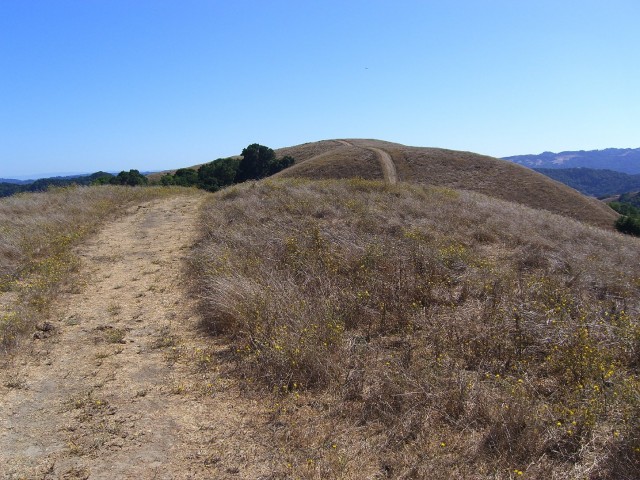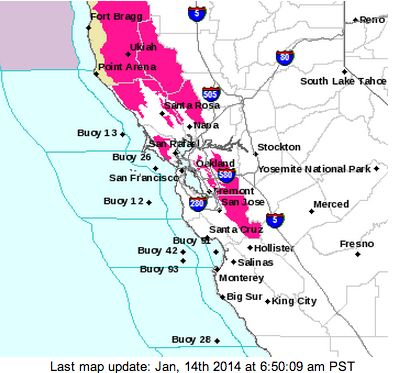
Update, 9:15 a.m. Wednesday: The National Weather Service red-flag warning is still in place for the North Bay and East Bay Hills (and for the Coast Range to the north of the Bay Area and the Diablo Range east of San Jose). The good news: Despite the windy, extremely dry conditions, no major fires have broken out (although a wind-driven 50-acre blaze on Kimball Island in the Sacramento-San Joaquin Delta on Tuesday burned three homes on Tuesday.)
The bad news is that red-flag warnings are now in place for almost the entire western slope of the Sierra Nevada, from near Quincy, in Plumas County, down to the Tehachapi Mountains east of Bakersfield. The Bay Area fire weather warning is in effect until Thursday morning. The warning for the Sierra will be in place until Friday.
Original post (Tuesday): Weather forecasters say today will be warm, windy and bone-dry, with humidity readings of just 5 to 10 percent. That sounds like September or October in the Bay Area, when gusty northerly or northeasterly winds occasionally howl across the hills and increase the danger of fire. In the fall, those Diablo Winds, the local cousins to Southern California's Santa Anas, can combine with dry brush and an ignition source — an arcing power line, an unattended campfire, a spark from a lawnmower — to touch off a wildfire. Here in the Bay Area, the classic, tragic example is the devastating East Bay Hills fire of October 1991.

We're now in the middle of what should be our wet season, and any talk of fire danger is something we normally would have left behind months ago. But with our typical rains having vanished for now, nothing about this season is normal. Take a look at the home page of the National Weather Service for the Bay Area. Its regional map is covered with crimson splotches that signal forecasters have posted a red-flag warning for the hills and mountains throughout the region.
Today's warning extends through Thursday morning. It reaches from the Coast Range in Humboldt County down to the Santa Cruz Mountains and covers all the hilly areas in the North Bay and East Bay.